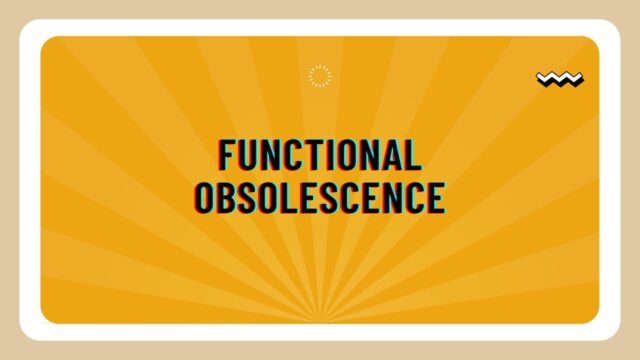
What is functional obsolescence
Functional obsolescence is a term used to describe a product that is no longer able to perform its intended function. This can be due to a number of factors, including changes in technology, fashion, or the environment. For example, a television that only supports analog signals would be considered functionally obsolete today.
Functional obsolescence can also occur when a product is designed in such a way that it can only be used for a limited time before it needs to be replaced. This is often done intentionally by manufacturers in order to boost sales. Whether it’s due to changes in the market or deliberate design choices, functional obsolescence ultimately leads to customers having to spend more money in the long run.
How does it impact businesses
Functional obsolescence can have a number of impacts on businesses, both positive and negative. On the one hand, it can result in higher sales as customers rush to buy the latest and greatest version of the product. On the other hand, it can also lead to lower sales as customers wait for better deals or wait for the next version to be released. Functional obsolescence can also impact businesses in terms of reputation; if a business releases a new product that quickly becomes obsolete, it can damage the business’s image and leave customers feeling frustrated and disappointed. Ultimately, whether functional obsolescence has a positive or negative impact on businesses depends on a variety of factors, including the nature of the product or service, timing of release, and customer reaction.
How can you prevent it from happening to your business
Functional obsolescence can have a devastating impact on businesses, often leading to reduced profits, market share and even closure. Fortunately, there are some steps that businesses can take to prevent functional obsolescence from happening. One of the most important is to keep up with new technology and trends. By staying ahead of the curve, businesses can ensure that their products and services remain relevant and in-demand. Additionally, businesses should regularly review their offerings to identify any areas where they may be at risk of becoming obsolete. By taking these proactive steps, businesses can protect themselves against the threat of functional obsolescence.
Examples of businesses that have fallen victim to functional obsolescence
One notable example is the Polaroid Corporation. Founded in 1937, Polaroid was once a leader in instant photography. However, the company struggled to adapt to the digital age, and by 2001 it had filed for bankruptcy. Functional obsolescence was partially to blame, as digital cameras became increasingly popular in the 1990s, rendering Polaroid’s instant cameras all but obsolete.
Another example is Blockbuster, the once-ubiquitous video rental chain. Initially, Blockbuster thrived as consumers flocked to rent movies on VHS and DVD. However, the company failed to embrace streaming services such as Netflix, and by 2010 it had filed for bankruptcy. Functional obsolescence was again a factor, as Blockbuster’s business model became increasingly outdated in the face of new technology.
Strategies to keep your business from falling victim to functional obsolescence
One way to avoid functional obsolescence is to keep up with trends. This means regular market research to identify emerging trends and make sure that your products or services are still relevant. It’s also important to be flexible and adaptable, so that you can quickly make changes to your offerings if necessary. Additionally, maintaining a strong relationship with your customers is crucial. Keep them involved and informed about your product or service, and listen to their feedback so that you can address any concerns before they become problems. By following these tips, you can help keep your business from falling victim to functional obsolescence.


































